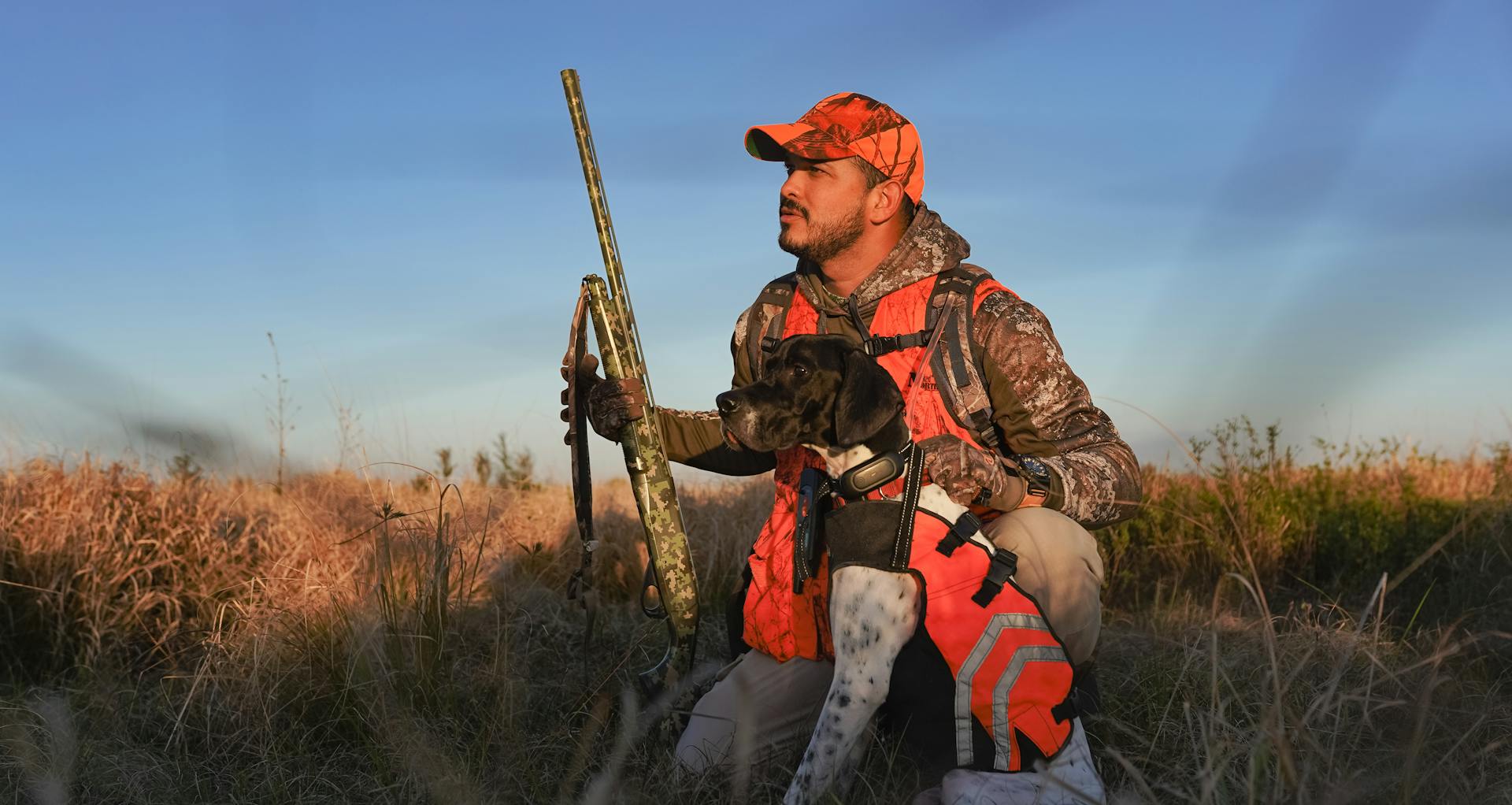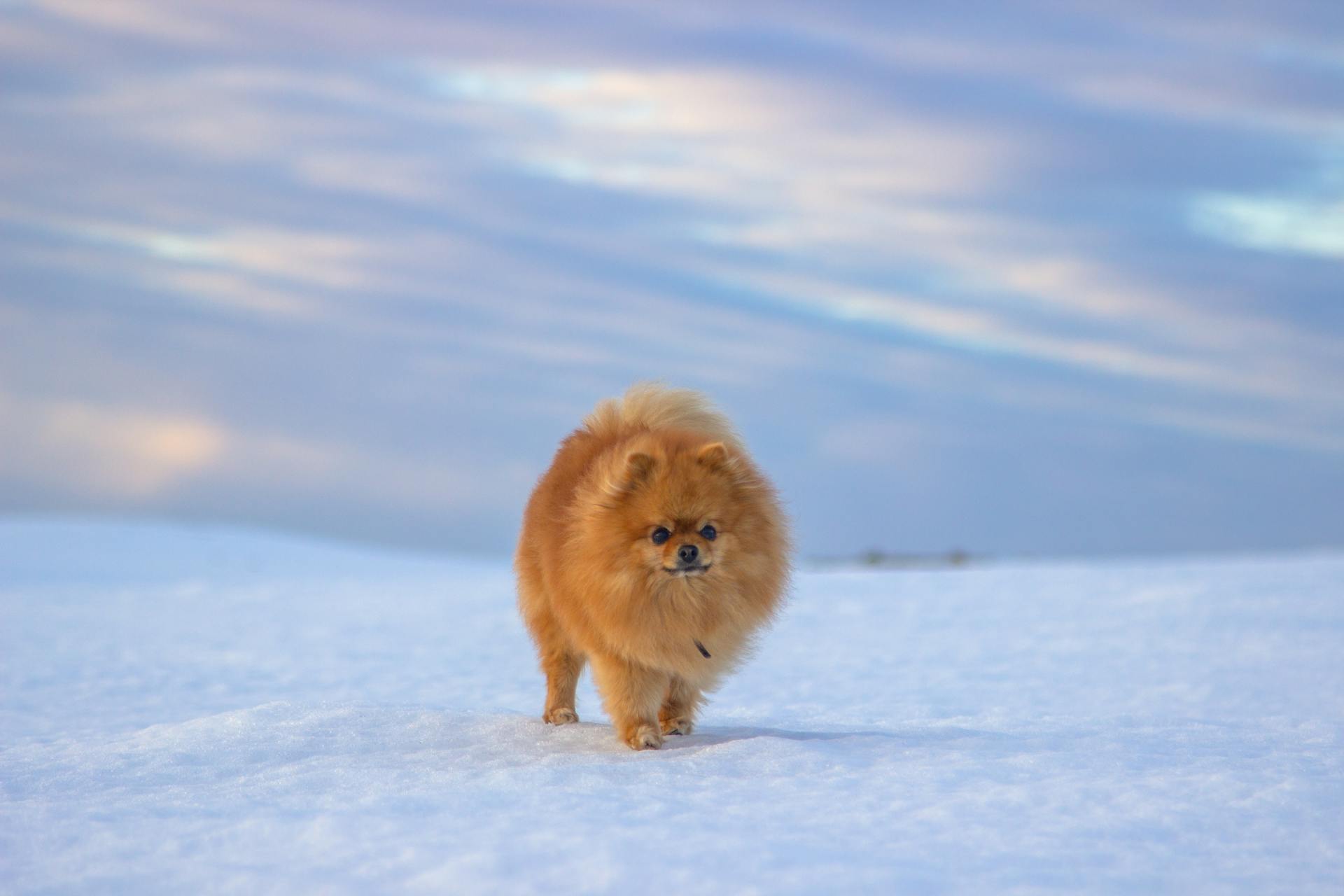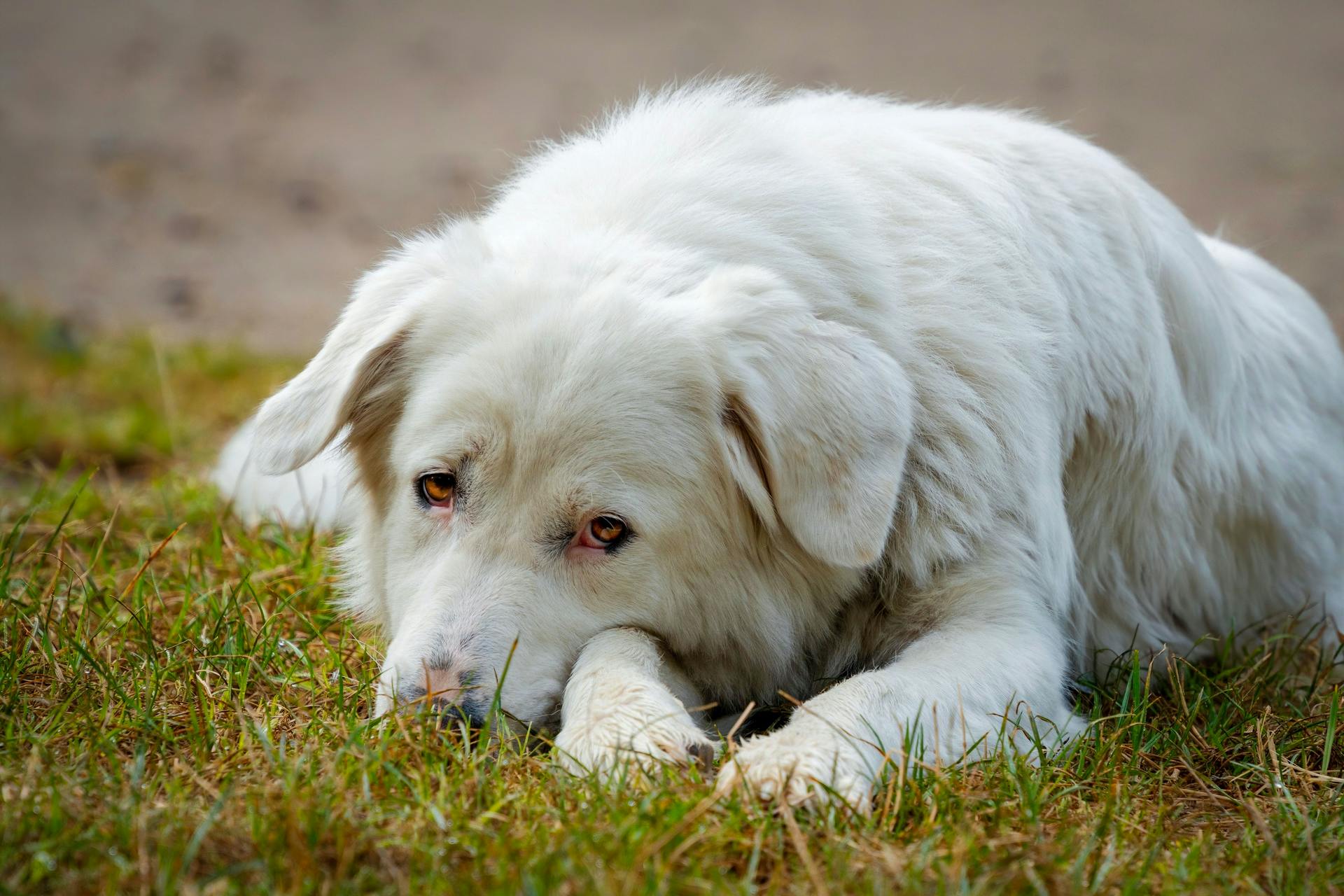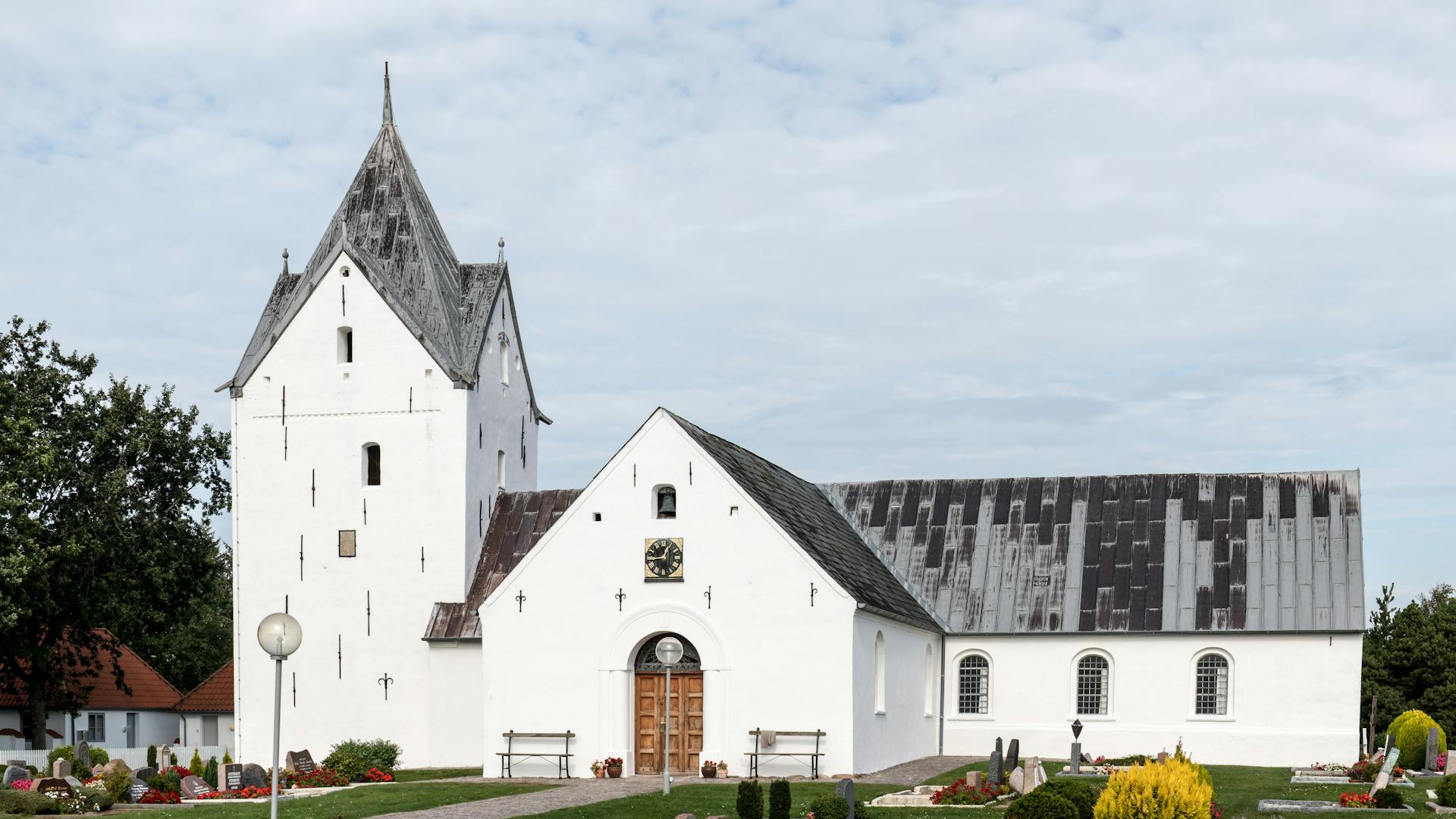
The Old Danish Pointer is a rare and unique breed that requires special care and attention. They originated in Denmark in the 19th century.
This breed was developed to hunt small game and has a strong prey drive, so they need regular exercise and mental stimulation to prevent boredom and destructive behavior. They thrive on physical activity and love to run and play.
Old Danish Pointers are known for their intelligence and trainability, but they can be independent and stubborn at times. Consistent, positive reinforcement training is essential to develop good behavior and a strong bond with your dog.
They are generally good with children and make loyal companions, but early socialization is crucial to ensure they get along with other pets and people.
You might like: Alaskan Malamute Behaviour
Physical Characteristics
The Old Danish Pointer is a medium-sized dog with a distinctive appearance. Males are noticeably larger and more muscular than females, with a weight range of 30-35kg and a height of 54-60cm.
Their bodies are powerfully built, with relatively short heads and lean bodies. They have a short coat that is white with brown markings, with the darker the shade of brown, the better.
Males have a deep and wide chest, especially compared to females. The ribs are well sprung and reach far back, with a well-developed forechest.
Their ears flop downwards and are carried tight to the face, and their eyes are a dark brown. The tail is thin and of medium length.
In terms of proportions, the body is slightly longer than tall. The back is firm and muscular, and the loin is short, wide, and strongly coupled.
Related reading: Straight Back German Shepherds
Grooming and Care
The Old Danish Pointer's grooming needs are relatively simple, requiring only a weekly brushing to help with low-level shedding. This breed has a short and dense coat that's hard to touch, so a gentle brush is best.
Their ears are prone to infections, so weekly checks are crucial to catch any bad odor, redness, or wax build-up. Cleaning with a damp cloth helps avoid dirt build-up.
Trim their nails if they don't wear them down naturally, and bathe them a few times a year to keep their coat looking its best. Brushing their teeth several times a week with a dog toothbrush will help prevent toothaches and other dental problems.
Additional reading: Why Are Labrador Retrievers so Popular
Grooming
The Old Danish Pointer's coat is white with brown markings, and it's relatively low maintenance. It only needs to be brushed once or twice a week to help with their low-level shedding.
To keep their ears healthy, it's essential to check them weekly for signs of infections, such as bad odor, redness, or wax build-up. Regular ear cleaning with a damp cloth will help avoid dirt build-up.
Trimming their nails is necessary if they don't wear them out naturally, and it's best to avoid cutting the quick to prevent pain and bleeding. Claws should be routinely clipped, though this may not be essential if given plenty of outdoor access.
Brushing their teeth several times a week with a dog toothbrush can help prevent toothaches or other dental problems. If you start this routine early, your dog will become accustomed to it.
Bathing them a few times a year is sufficient, and using proper dog shampoos is a must. Wiping them down with a hound mitt in between bathings will help give their coats a shine.
Discover more: Low Maintenance Hypoallergenic Dogs
Exercise
The Old Danish Pointer is a very active dog breed.
They require a large backyard or area where they can play freely. This allows them to get the physical exercise they need to stay happy and healthy.
Long, brisk walks are also a must to keep them on top of their exercise. This will help them stay physically fit and prevent boredom.
Taking time throughout your day to engage these dogs in active play is essential. They don't like feeling bored, so make sure to keep them entertained.
Engaging them in mental stimulation is also crucial. This can be done through various activities that challenge their minds and keep them engaged.
You might like: How Much Exercise Do Labrador Retrievers Need
Owning Essentials
Owning an Old Danish Pointer requires some essential knowledge to ensure a happy and healthy relationship.
The Old Danish Pointer is a great dog overall, but it's best to know exactly what you're getting into when bringing this dog breed into your home.
Regular grooming is crucial for this breed, as they have a thick coat that sheds heavily.
Old Danish Pointers are generally good with children, but it's essential to socialize them well from an early age.
They need plenty of exercise, which includes daily walks and playtime, to keep them happy and healthy.
Old Danish Pointers are prone to certain health issues, such as hip dysplasia, so regular veterinary check-ups are a must.
Temperament and Training
The Old Danish Pointer is a calm and stoic breed that enjoys spending time with people, making them well-adjusted and sensible pets.
They form a close bond with their master and live to please, which is why they thrive on positive reinforcement training. This breed excels when well-trained and enjoys performing tasks to the best of their ability.
They can become bored easily and develop anxiety if left alone for prolonged periods, so it's essential to provide them with plenty of mental and physical stimulation. This breed is highly intelligent and needs varied and fun training exercises to keep them engaged.
Their hunting instincts are strong, and they should not be homed with pet birds, but they get along well with other animals and are patient with children.
Curious to learn more? Check out: Dogs Breeds That Start with B
UKC Accepted
The United Kennel Club accepted the Old Danish Pointer in 2006.
This recognition is a testament to the breed's unique characteristics and qualities.
Temperament & Intelligence
The Old Danish Pointer is a calm and well-behaved breed that adjusts well to living with people.
They are highly social animals that thrive on human interaction and can become bored and anxious if left alone for too long.
This breed excels in training and enjoys performing tasks to the best of their ability, forming a close bond with their master.
They are intelligent and instinctively good at using their nose and retrieving prey, even from a young age.
Old Danish Pointers are great with kids and make excellent playing partners, but it's essential to supervise interactions between dogs and children.
They are quiet, stable, and determined, making them suitable for small or large hunting grounds.
Their calm nature and patience with children make them a great choice for families with kids, but they still need regular exercise and mental stimulation to prevent boredom and bad habits.
Related reading: Is a Yorkie a Good Family Dog
Socialization
Socialization is a must for Old Danish Pointers, and it starts as soon as you bring your dog home.
Early socialization will ensure your dog doesn't become shy or aggressive. Proper socialization will teach your dog how to react in many different situations.
Expose your Old Danish Pointer to many different dogs, people, sights, and sounds. This will help your dog become confident and calm in new environments.
With proper socialization, you don't have to worry that your dog will become aggressive or not get along with other dogs. Your Old Danish Pointer will enjoy the company of other dogs.
However, it's essential to introduce your Old Danish Pointer to other pets at a young age, especially if you have birds in your home. Their hunting history may lead to aggression towards birds.
Old Danish Pointers are great with other pets when socialized correctly, but it's crucial to remember that they may start chasing smaller animals due to their hunting instinct.
Broaden your view: Rottweilers Aggressive
History and Popularity
The Old Danish Pointer has a rich history dating back to the start of the 18th century when Morten Bak created the breed in Glenstrup, Denmark.
It's believed that Mr. Bak bred local farm dogs with 'gypsy dogs' or Spanish Pointers to create a Pointer for hunting purposes, which became known as the 'Bakhound'.
The breed was well-liked for its hunting ability and remarkable sense of smell, making it an excellent Pointer and retriever.
The Old Danish Pointer was largely used to hunt birds and water fowl, taking advantage of its strong sense of smell and hunting prowess.
The breed numbers decreased dramatically in the 20th century due to the arrival of new hunting breeds and two World Wars, but a breed club was formed in 1947 to prevent its extinction.
The United Kennel Club officially recognized the breed in 2006, acknowledging its unique heritage and hunting abilities.
See what others are reading: Can Police Dogs Smell Guns
About and History
The Old Danish Pointer is a unique breed with a fascinating history. It's the only Pointer dog originating in Scandinavia.

Morten Bak is credited with creating the breed in the 18th century in Glenstrup, Denmark. He likely bred local farm dogs with 'gypsy dogs' or Spanish Pointers to create a Pointer for hunting purposes.
The breed was known locally as the 'Bakhound' and was developed during a time when hunting became more accessible to the common man. This trend was occurring all over Europe, not just in Denmark.
The local Danish dogs used in the breed's creation were likely Scent Hounds. The Old Danish Pointer is well-liked for its hunting ability and remarkable sense of smell.
Throughout the 20th century, the breed numbers decreased dramatically due to the arrival of new hunting breeds and two World Wars. A breed club was formed in Denmark in 1947 to prevent the breed's extinction.
The Old Danish Pointer is primarily used to hunt birds and water fowl. They are also good retrievers, making them a valuable companion for hunters.
They Have a Breeding Club
The Old Danish Pointer breed has a dedicated breeding club that was formed in Denmark in 1947 to save the breed from dwindling numbers. This club is a testament to the breed's rich history and the efforts of its enthusiasts to preserve it.
The club's formation was a crucial step in ensuring the breed's survival, and it has been instrumental in promoting the Old Danish Pointer's unique characteristics and qualities.
In fact, the club's efforts helped to raise awareness about the breed and sparked a renewed interest in the Old Danish Pointer.
A unique perspective: American Kennel Club Lancashire Heeler
Frequently Asked Questions
What is the lifespan of a Danish Pointer?
The average lifespan of a Danish Pointer is 12 to 14 years. With proper care, they can live a long and healthy life.
Featured Images: pexels.com


